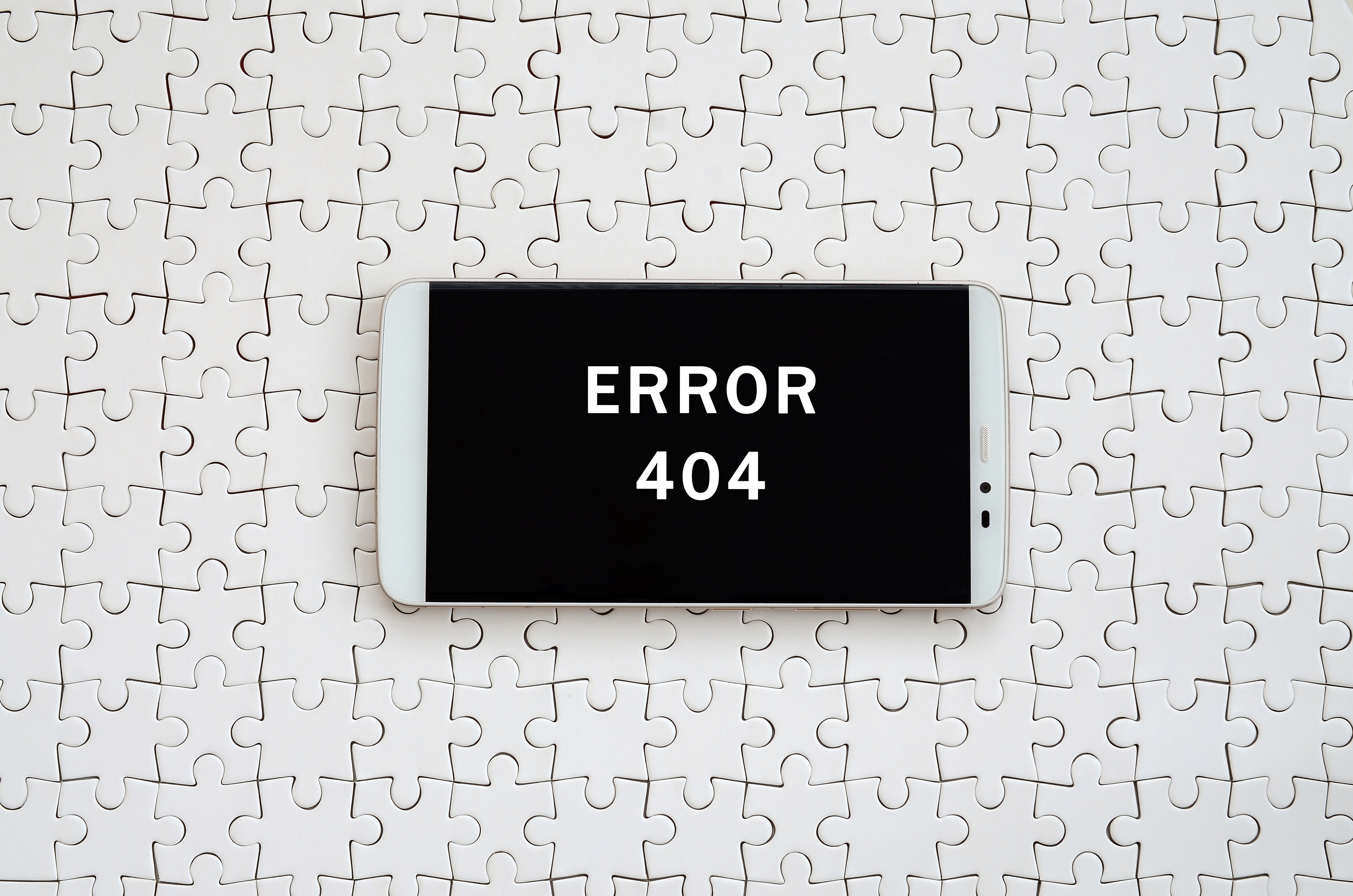7 min read
How Can 404 Errors Impact On-Page SEO Performance? Learn Here
Jeremy Wayne Howell
:
Jul 3, 2025 6:07:10 AM

Key Highlights
-
404 errors occur when a requested page on a website cannot be found, leading to an error page display.
-
Poor handling of 404 errors leads to a bad user experience, increasing bounce rates and reducing trust.
-
Tools like Google Search Console and Screaming Frog assist in identifying and resolving error pages.
-
Creating custom 404 pages improves site engagement and maintains usability for visitors.
Overview
Encountering 404 errors on a website can be more than just a frustration; it may harm your on-page SEO. These errors signal search engines and users that a specific page no longer exists, which can affect rankings, crawlability, and user trust. While common in website management, ignoring them can lead to SEO challenges over time.
This article explores everything you need to know about 404 errors, their causes, impacts, and strategies to manage them effectively. Dive in to strengthen your website performance.
What Are 404 Errors and Why Do They Occur?

A 404 error is an HTTP status code indicating that the requested web page is unavailable. When users or search engines try accessing a missing resource, they encounter an error page, often labeled “Page Not Found.”
These errors are commonly caused by broken links, changes to an old URL, or missing content on the server. Without proper management, they frustrate users and affect your website's performance. Let’s unpack their technical explanation and explore common causes to gain a deeper understanding.
Definition and Technical Explanation of 404 Errors
A 404 error occurs when a browser sends a request for a page that does not exist on the server, and the server responds with an HTTP 404 status code. Essentially, it’s a system-driven error message indicating that the server couldn’t locate the requested page.
For instance, instead of a successful 200 status code (indicating content availability), search engines receive the error code 404, recognizing it as "Page Not Found." This standard HTTP response informs both users and web crawlers about the absence of the resource.
Search engines, such as Google, consider these responses as part of the usual web environment. However, an incorrect 404 response, like an important page returning this error, could signal technical SEO issues. Website audits using tools like Frog SEO Spider can help pinpoint such occurrences and ensure they are resolved effectively.
Common Causes of 404 Errors in Websites
404 errors can arise due to several common causes related to improper website management. Let's highlight some key reasons below:
-
Old URLs: Links pointing to outdated pages that no longer exist result in errors.
-
Missing Content: Accidental deletion of web pages or improperly migrated content during updates can trigger 404 errors.
-
Internal Links: Typos or broken links within a site direct users to invalid pages.
-
Content Management System (CMS) Errors: Misconfigurations or system glitches in the CMS can cause missing pages.
-
External Links: Backlinks to inaccurate or outdated URLs from third-party websites also result in errors.
Understanding these pitfalls provides clarity and supports preventive strategies. Now, let’s examine the different categories of 404 errors and their unique traits.
Types of 404 Errors: Hard vs. Soft 404s
Not all 404 errors are created equal. They come in two key forms: hard 404s and soft 404s.
A hard 404 reflects a genuine absence of the requested page, confirmed with a proper 404 response code. In contrast, a soft 404 occurs when a non-existent page returns a 200 OK code, misleading search engines. According to Google’s Webmaster Trends Analysts, managing both types effectively is crucial for maintaining a website’s usability and SEO standing.
Characteristics of Hard 404 Errors
Hard 404 errors are standard error codes that directly indicate missing pages. When users or crawlers request a page, the server returns a genuine 404 status code, signaling that the content no longer exists.
Such errors often appear due to deleted pages or typos in the requested URL. Regular site audits with tools like Frog SEO Spider can uncover these issues. While Googlebot treats genuine 404 pages as routine, excessive errors across critical web pages may harm technical SEO performance.
Hard 404 pages should ideally display a custom-design error page that redirects users to other relevant sections to maintain engagement and reduce bounce rates. Without proactive management, hard 404 errors could break link structures and disrupt user flow across the site. Let’s take a closer look at the not-so-obvious challenges of soft 404 errors.
Understanding Soft 404 Errors and Their Unique Challenges
Soft 404 errors arise when absent pages display an error-like message but still return a 200 response code, signaling success. Commonly, this occurs in placeholder pages or when a page lacks meaningful content.
These errors pose unique challenges. For example, Google's crawlers may repeatedly process these links, wasting the allocated crawl budget. Additionally, such pages are often excluded from search results, impacting visibility. Using tools like Google Analytics can help identify pages flagged as soft 404 errors.
Addressing these errors involves improving the page or replacing it with a new URL through 301 redirects. Alternatively, mapping these pages to helpful links prevents search engines from misinterpreting their relevance. Implementing these fixes mitigates risks to your crawl budget and enhances your website’s SEO health.
How 404 Errors Affect On-Page SEO Performance
Failing to address 404 errors can undermine key elements of on-page SEO by creating crawl errors and breaking internal link structures. If critical pages are impacted, rankings and site authority may decline.
Beyond harming SEO rankings, these errors make your website harder for search engines to understand. Regularly reviewing error reports and addressing a list of errors ensures errors are resolved before impacting the website’s SEO. Let’s explore two main areas where the effects of 404 errors are most evident.
Impact on Crawlability and Indexing by Search Engines
Effective indexing in search engines is critical for visibility, but excessive crawl errors limit this success. Search engines assign a "crawl budget" for your site, representing the number of pages it will crawl during a session.
404 errors consume this budget unnecessarily. Significant pages may go unindexed as Googlebot spends time processing non-existent resources. This reduces your site’s visibility in search results and delays the inclusion of new content.
Conducting a site audit with tools like Google Search Console can reveal problematic URLs and prioritize their resolution. Correcting broken links, updating error-prone lists of URLs, and regularly monitoring for anomalies can ensure optimum indexing efficiency. Next, let’s focus on how these errors influence page authority flow.
Influence on Internal Linking and Page Authority Flow
Strong internal links create a cohesive structure that enhances page authority and navigational ease for users. However, 404 errors disrupt this flow, breaking valuable pathways.
When an external link pointing to a critical page encounters a 404 error, valuable backlinks directing authority to the page are lost. Similarly, internal linking structures affected by 404s reduce the efficiency of authority distribution across your site, ultimately weakening site performance.
By auditing old and incorrect links and implementing appropriate action, such as establishing 301 redirects, you can restore link equity. Tools like Semrush help identify these inefficiencies, enabling timely actions to safeguard your website’s overall integrity. But how do these errors affect users directly? Let’s dive deeper.
User Experience Implications of 404 Errors
404 errors significantly degrade overall user experience by leading visitors to frustrating error pages. Frequent errors may result in a bad user experience, driving users away prematurely.
Worse yet, encountering missing links on important pages can increase dissatisfaction, creating trust issues. For websites committed to long-term growth, managing these errors efficiently is a cornerstone of building user loyalty and reducing bounce rates. Here’s how these errors deeply impact engagement metrics.
How 404 Errors Can Increase Bounce Rates
Encountering a 404 error page frustrates users, leading them to exit without exploring further, which spikes the bounce rate. This signals search engines that the site engagement is suboptimal.
Take, for example, a visitor landing on a blog post that links to a non-existent page. Such errors break the user journey, deter return visits, and suggest irrelevance to search engines. Higher bounce rates directly hurt rankings for the specific affected pages.
To counteract this, ensure accurate internal linking and design custom 404 pages with a search bar to guide users. Combine these steps with timely technical fixes to recover site engagement. Equally, these errors may erode user trust, as discussed next.
Effects on User Trust and Site Engagement
Persistent 404 errors can undermine user trust, as broken links project an image of a poorly maintained website. Trust is particularly critical for transactional or resource-heavy websites.
A better user experience calls for proactive error handling. Custom error pages offering helpful navigation links or direct paths to relevant pages can mitigate frustration. Enhancing site trust means fewer abandoned sessions and stronger credibility.
Websites with seamless navigation, complemented by responsive fixes for errors, foster site engagement, creating a positive perception. Activities like content updates help reinforce this consistency, retaining user interest and trust. Monitoring plays a key role in achieving this objective. Let’s explore how to tackle it systematically.
Detecting and Monitoring 404 Errors

Identifying 404 errors is crucial for maintaining a healthy website. Implementing tools like Google Search Console and Screaming Frog can provide valuable insights into broken links, allowing website owners to generate a comprehensive list of URLs that lead to error pages.
Regular site audits are essential to catch crawl errors, as they directly impact user experience and SEO rankings. Setting up alerts for new errors ensures proactive monitoring, helping to address issues before they escalate and affect site performance.
Tools for Identifying 404 Errors (Google Search Console, Screaming Frog, etc.)
A variety of powerful tools assist in pinpointing 404 errors effectively. Google Search Console is a staple for website owners, offering insights into crawl errors and providing a comprehensive list of URLs that return these response codes.
Additionally, Screaming Frog SEO Spider excels in conducting detailed site audits, identifying broken links, and presenting a clear view of your site's internal and external links. Regularly using these tools ensures that any missing content is addressed promptly, enhancing overall website performance and user experience.
Best Practices for Ongoing Monitoring and Alerts
Regularly monitoring for 404 errors is vital for maintaining the health of your website’s SEO. Utilizing tools like Google Search Console can help website owners stay informed about crawl errors and broken links that might impact user experience.
Setting up alerts ensures timely notification, allowing for immediate action on critical issues. Employing a robust site audit process will help identify missing content and outdated URLs, thus supporting ongoing optimization efforts and ultimately enhancing search rankings and overall site performance.
Effective Strategies to Fix and Prevent 404 Errors
Addressing 404 errors swiftly is crucial for maintaining site performance and user experience. Implementing 301 redirects to guide users from the old URL to a new one ensures they access relevant pages, reducing bounce rates and avoiding frustrating error messages.
Regular audits using tools like Google Search Console can highlight broken links, enabling website owners to take immediate action. By updating internal links and continuously monitoring for crawl errors, a website can effectively optimize its SEO strategy and enhance its overall search rankings.
Implementing 301 Redirects and Updating Internal Links
Utilizing 301 redirects is essential for guiding both users and search engines from an old URL to a new one. This method not only preserves SEO value but also enhances user experience by reducing instances of error pages. Updating internal links to direct traffic to relevant pages further minimizes broken links.
This proactive approach safeguards your website from technical SEO issues, decreases bounce rates, and improves overall search rankings. Taking these steps ensures valuable backlinks remain effective and aids in maintaining site performance.
Final Insights
Addressing 404 errors is crucial for maintaining optimal on-page SEO performance. These errors, if left unattended, can deteriorate user experience and significantly impact search rankings.
By systematically detecting and monitoring these errors using tools like Google Search Console and Screaming Frog, website owners can enhance site performance. Employing best practices ensures that important pages remain accessible and relevant.
Don't let hidden 404 errors undermine your SEO efforts.
Contact The Way How today for expert error detection and resolution services. We'll ensure your website is free of performance-sapping 404s, leading to a smoother user journey and stronger search rankings.
Frequently Asked Questions
While no specific number defines a harmful level of 404 errors, generally, having more than 3-5% of pages returning 404 can negatively impact SEO.
Frequent errors hinder user experience and signal to search engines that the site may not be well-maintained.
Fixing 404 errors promptly is crucial for maintaining user experience and SEO rankings.
Ideally, they should be addressed as soon as detected, typically within 24 to 48 hours. This minimizes the impact on site performance and prevents potential loss of traffic.
Want to Learn Something Else?

Discover How On-Page SEO Can Improve Website Usability

